The SAT Math section can be daunting, but with the right preparation and understanding of the test structure, you can approach it with confidence. This guide will break down the SAT Math section, explain the different types of questions you’ll encounter, and provide strategies to help you succeed. By the end of this guide, you’ll have a solid understanding of what to expect and how to tackle the challenges of the SAT Math section.
Overview of the SAT Math Section
The SAT Math section is divided into two parts: the Non-Calculator section and the Calculator section. Together, these sections assess your mathematical skills, covering topics from basic algebra to more advanced topics like trigonometry and complex problem-solving.
SAT Math Test Sections
Non-Calculator Section:
- Number of Questions: 20
- Time Allotted: 25 minutes
- Average Time per Question: 1 minute and 15 seconds
Calculator Section:
- Number of Questions: 38
- Time Allotted: 55 minutes
- Average Time per Question: 1 minute and 30 seconds
While the time limits may seem tight, with adequate preparation and practice, you’ll be able to manage your time effectively.
Types of SAT Math Questions
The SAT Math section includes two main types of questions: Multiple-Choice Questions (MCQs) and Grid-Ins (GIs), also known as student-produced responses. Understanding the format of these questions is key to performing well.
Multiple-Choice Questions (MCQs)
The majority of the math section consists of multiple-choice questions. Each question presents four possible answers, and you must select the one that you believe is correct. These questions cover a range of mathematical concepts, from algebra and geometry to data analysis and problem-solving.
Most of the math section is just like the rest of the SAT with your well-known bubbled-in letters:
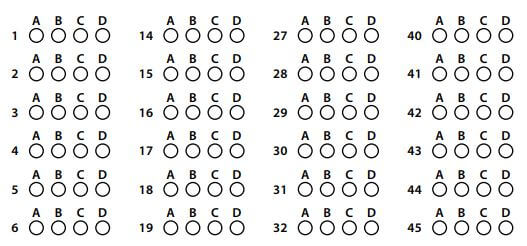
Image Courtesy of Stellarscores
You know the drill! These are multiple-choice questions where you just fill in the choice you think is correct.
Example:
- Question: What is the value of xx if 2x+3=72x+3=7?
- Answer Choices:
- A) 1
- B) 2
- C) 3
- D) 4
- Correct Answer: B) 2
Grid-Ins (Student-Produced Responses)
Grid-In questions require you to calculate the answer and fill it in on a grid. Unlike multiple-choice questions, there are no answer choices to choose from—you must come up with the answer on your own. These questions test your ability to solve problems independently and accurately.
What tends to scare students is the grid-in student-produced answers, where instead of choosing from a selection of four answer choices, you have to enter your answers in the grids provided. You’re essentially coming up with the answer yourself by solving the problem!
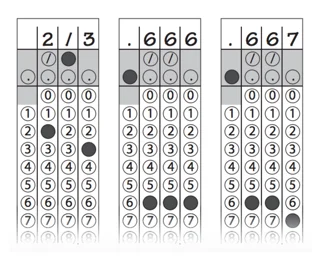
Image Courtesy of Prepscholar
Key Tips for Grid-Ins:
- Accuracy Matters: The graders only score what you have bubbled in on the grid, so double-check your answers for accuracy.
- Use All Available Space: You can start entering your answer in any column, as long as the entire answer fits within the grid.
- Positive Numbers and Zero: The grid is designed to accommodate positive numbers and zero only.
- Decimals and Fractions: If your answer is a decimal, round it appropriately if it exceeds the grid’s four decimal places. Fractions should be converted to improper fractions rather than mixed numbers.

Example:
- Question: Solve for y if 3y − 5 = 10.
- Answer: 5 (You would grid in 5).
SAT Math Practice Problems
To help you prepare, we’ve compiled a selection of practice problems from each of the SAT Math domains. By working through these problems, you can identify your strengths and areas that may need more practice.
Heart of Algebra
Heart of Algebra questions focus on linear equations, inequalities, and systems of equations. These problems are foundational and require you to understand and manipulate algebraic expressions.
Example:
- Question: Solve the equation 2x − 3 = 7.
- Correct Answer: 5
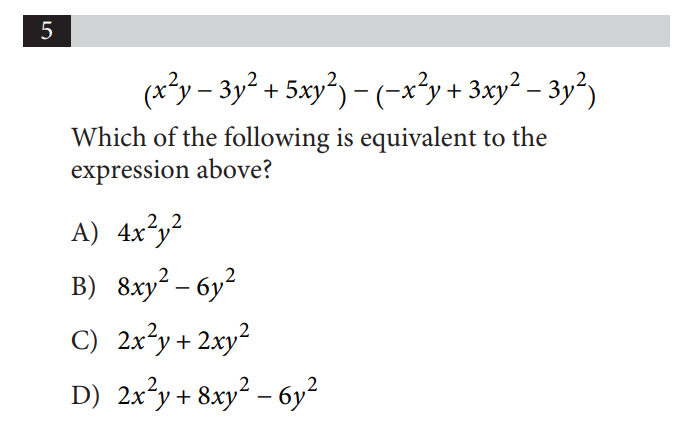
Courtesy of SAT Practice Test 3 – Section 3 – NO CALCULATOR

Courtesy of SAT Practice Test 3 – Section 3 – NO CALCULATOR
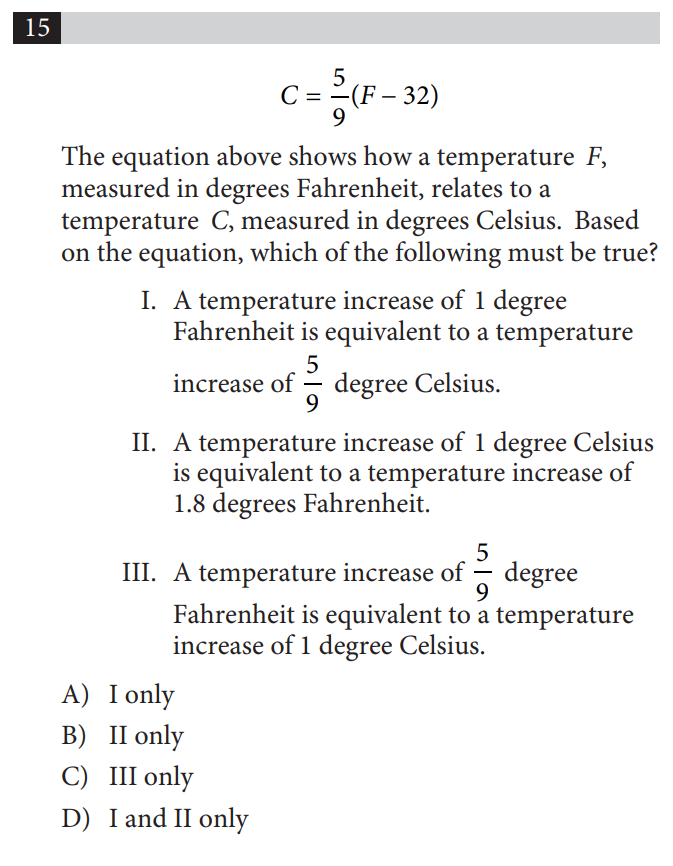
Courtesy of SAT Practice Test 3 – Section 3 – NO CALCULATOR
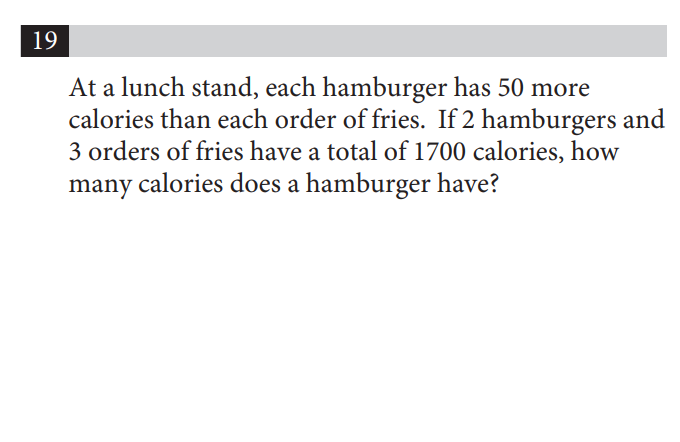
Courtesy of SAT Practice Test 3 – Section 3 – NO CALCULATOR
Problem Solving and Data Analysis
This domain tests your ability to interpret and analyze data, as well as solve problems related to ratios, percentages, and proportional reasoning. These questions often involve interpreting graphs and tables.
Example:
- Question: If a car travels 150 miles in 3 hours, what is its average speed in miles per hour?
- Correct Answer: 50
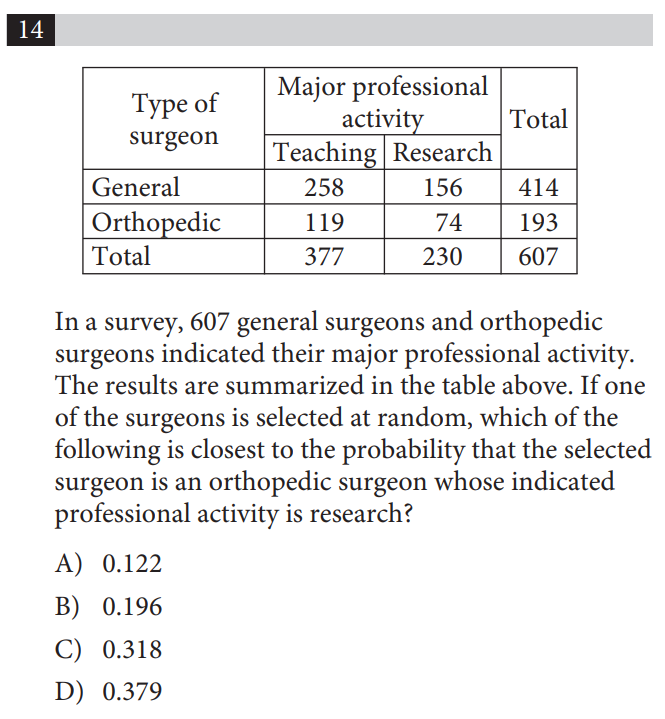
Courtesy of SAT Practice Test 5 – Section 4 – CALCULATOR
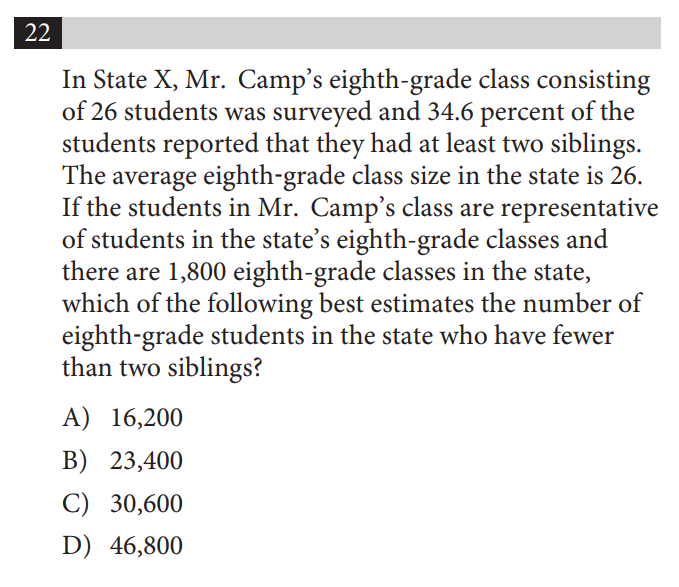
Courtesy of SAT Practice Test 5 – Section 4 – CALCULATOR
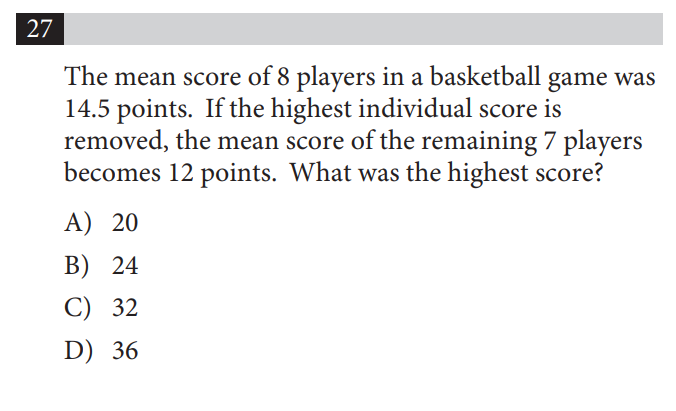
Passport to Advanced Math
These questions involve more complex equations, including quadratic equations, exponential functions, and manipulating algebraic expressions. Mastery of these topics is essential for higher-level math.
Example:
- Question: Solve for xx in the equation x^2−4x−5=0.
- Correct Answer: x=5 or x=−1
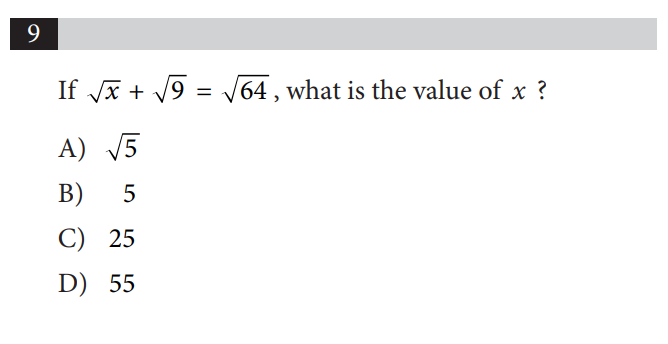
Courtesy of SAT Practice Test 6 – Section 3 – NO CALCULATOR
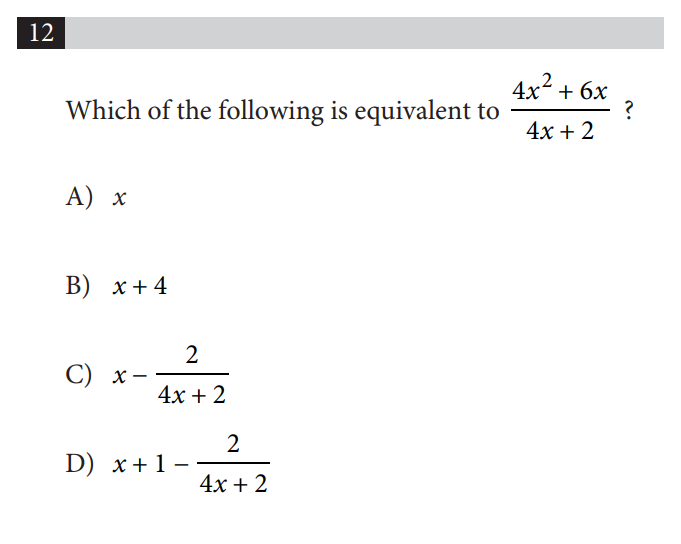
Courtesy of SAT Practice Test 6 – Section 3 – NO CALCULATOR
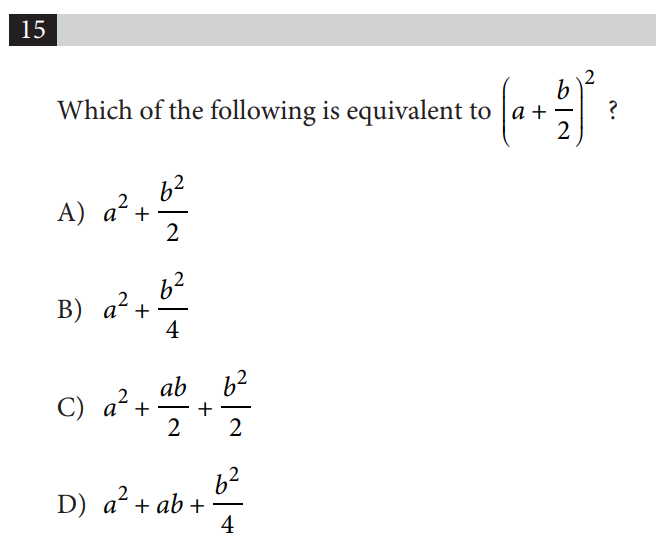
Courtesy of SAT Practice Test 6 – Section 3 – NO CALCULATOR
Additional Topics in Math
This category includes questions on geometry, trigonometry, and other advanced math topics. You’ll need to be familiar with concepts such as the properties of angles, the Pythagorean theorem, and the unit circle.
Example:
- Question: What is the length of the hypotenuse of a right triangle with legs of 3 and 4 units?
- Correct Answer: 5 units
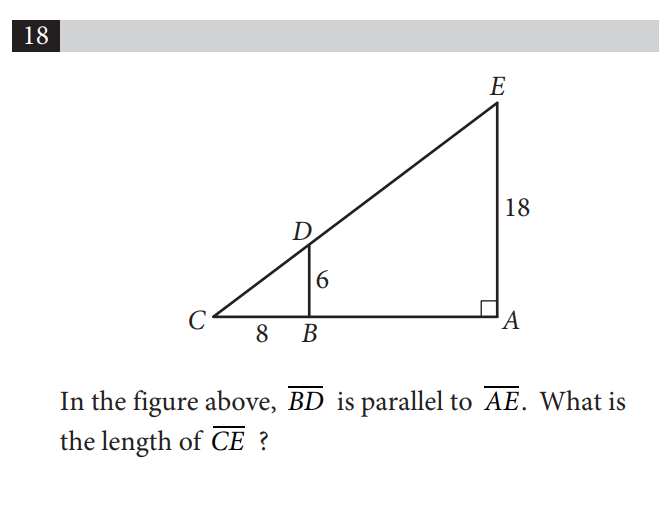
Courtesy of SAT Practice Test 6 – Section 3 – NO CALCULATOR
How to Prepare for the SAT Math Section
Preparation is the key to success on the SAT Math section. Here are some strategies to help you study effectively:
1. Start with a Practice Test
Begin your preparation by taking a full-length practice test or focusing on the math section. This will help you gauge your current level and identify areas that need improvement. Once you’ve completed the test, review your answers, especially the ones you got wrong, and take note of the topics you need to study further.
2. Focus on Weak Areas
After reviewing your practice test, create a study plan that focuses on your weak areas. For example, if you struggled with quadratic equations, spend extra time reviewing and practicing those types of problems. By targeting your weaknesses, you can make the most of your study time.
3. Use Quality Resources
There are many resources available to help you prepare for the SAT Math section. Some recommended resources include:
- College Board: Provides official SAT practice tests and study materials.
- NUM8ERS Learning: Offers study guides, practice questions, and strategies specifically for the SAT Math section.
- Khan Academy: Offers free, personalized SAT practice with instructional videos and full-length practice tests.
4. Practice with Timed Tests
Time management is crucial on the SAT. To build your pacing skills, practice with timed tests. Set a timer for each section and try to complete the questions within the allotted time. This will help you get used to the pressure of the test and improve your speed and accuracy.
5. Review and Learn from Mistakes
After each practice test, take the time to review your mistakes. Understanding why you got a question wrong is just as important as getting it right. This reflection will help you avoid making the same mistakes on the actual test.
6. Familiarize Yourself with Test Strategies
Learning specific test strategies can also improve your performance. For example:
- Plugging in Numbers: When faced with algebraic expressions, try plugging in small numbers to simplify the problem.
- Elimination: Narrow down multiple-choice options by eliminating clearly incorrect answers, increasing your chances of choosing the correct one.
- Rephrasing Questions: Translate word problems into mathematical equations to make them easier to solve.
Conclusion
The SAT Math section may seem challenging, but with the right preparation and understanding of the test structure, you can approach it with confidence. Focus on building a strong foundation in algebra, problem-solving, and advanced math topics, and practice regularly with timed tests. By using quality resources and employing effective test strategies, you’ll be well-prepared to achieve your best score on the SAT Math section.
Remember, consistent practice and a positive mindset are key to your success. With dedication and effort, you can conquer the SAT Math section and move closer to your college goals. Good luck!
© NUMBERS. All rights reserved.
AP® and SAT ® are trademarks registered by the College Board. College Board is not affiliated with nor endorses this website.






